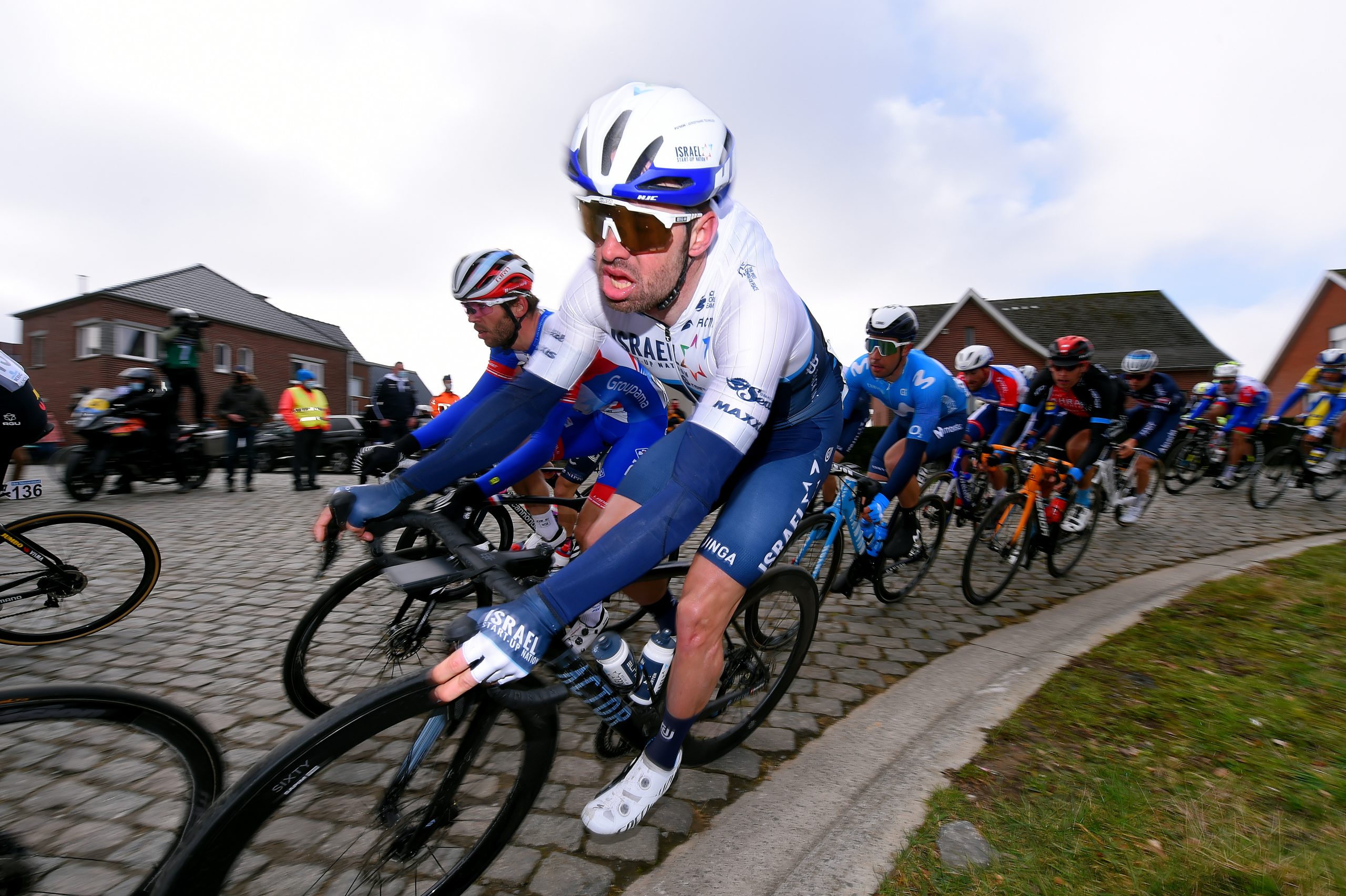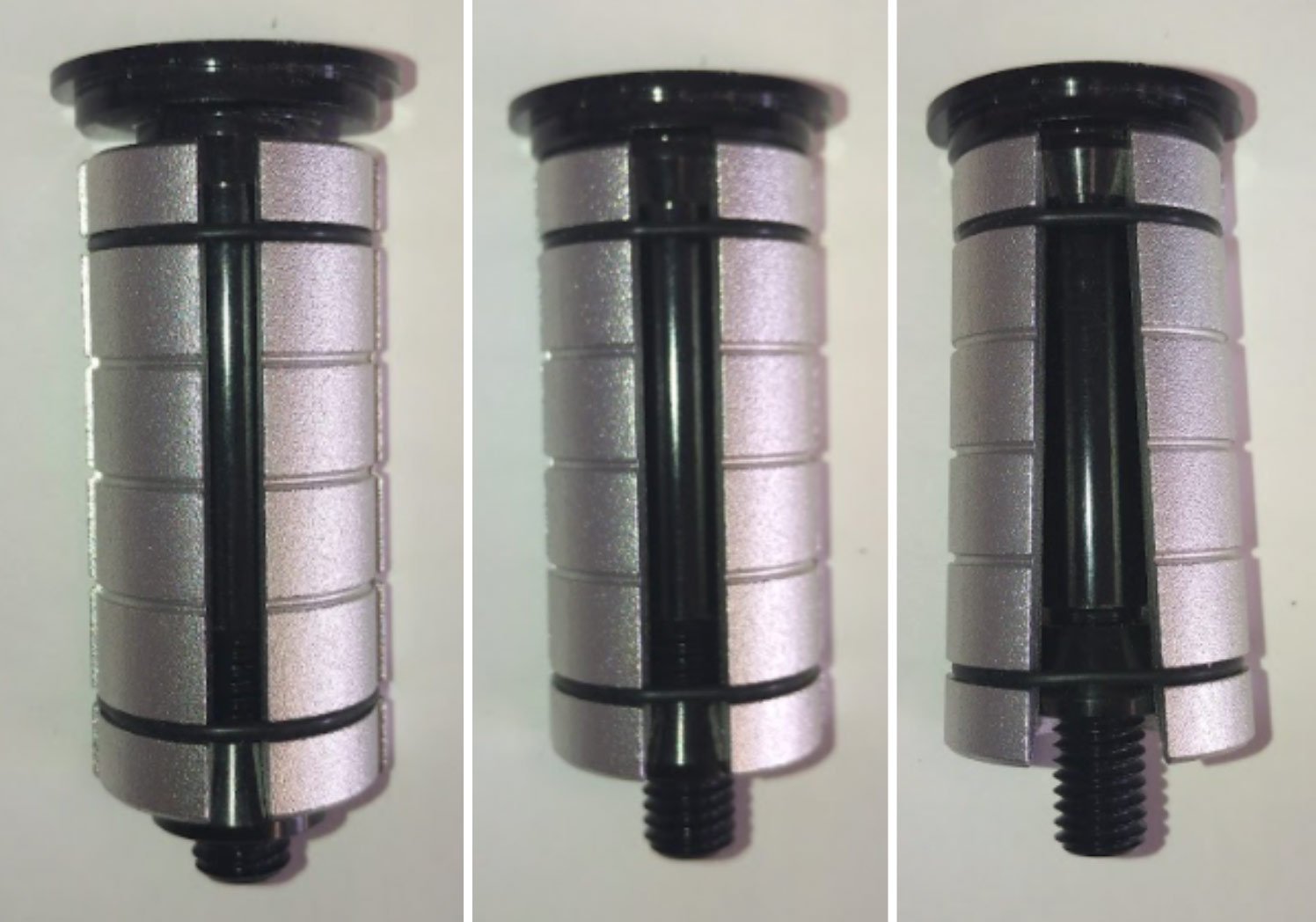Factor explains steerer failure at Omloop Het Nieuwsblad and cautions owners not to overtorque
The WorldTour team experienced a 'batch issue' Factor says, but reminds owners that if they do experience problems, applying more torque is not the answer


A month after Belgium rider Tom Van Asbroeck's steerer broke at Omloop Het Nieuwsblad, Factor has released information on the cause of the failure - reassuring owners that they don't need to be concerned about their own Factor Ostro bikes - though Israel Start-Up Nation is still riding alternative models.
The team riders have switched from the Ostro bike to riding the 02 VAM and One, having begun the season riding exclusively the Ostro.
Images from the race on Saturday, February 24 show that Van Asbroeck was marooned at the side of the road whilst waiting for a replacement. Factor says he: "encountered an issue with his bike which ended up with his steerer tube being broken inside the frame after striking a curb" - a line that would make an excellent example of use of the passive voice for anyone studying English Language. Cycling Tips, who broke the story, have an image if you want to take a look.
The riders still raced the Ostro the next day, at Kuurne–Brussels–Kuurne, but after that, Factor says: "out of an abundance of caution, [we] and the team jointly came to the decision that after the weekend’s racing we would put the riders back onto the ONE and O2 VAM for racing purposes until we could ascertain the exact root cause of the failure."
Factor said it was "flummoxed" as to how the steerer had passed both the official ISO standards and its own "internal standards which go well above these minimums with no issues." Similarly, when Canyon issued a 'stop ride' notice to all owners of the Aeroad, it said the bar had passed "intensive testing procedures" to meet ISO standards.
However, Factor said that on further investigation, it transpired that team mechanics had experienced problems with maintaining headset preload during the 2021 season. These issues had not been encountered with pre-production bikes raced in 2020. Factor noted that it had made several changes, including putting the D-shaped compression bung (which caters for the internal cable routing) into "full, mass production" as opposed to CNCing.
Analysis of the frame and fork in question showed that the failure had taken place "adjacent to the bottom of the compression plug."
After repeated attempts to replicate the failure, Factor's engineers succeeded in replicating the preload issue - eventually concluding that there was a "batch issue" with the plug provided to the team - in which the plugs had received a clear adonizing treatment after sandblasting, which "decreased the surface roughness and ultimately the pull out strength."
Further analysis, Factor says, showed that the compression plugs did not conform to previous batches used, eventually causing "a tremendous amount of distortion in that small local area" in question: the bottom of the steerer tube.
The engineers concluded that the failure was caused by a combination of lack of preload, which led to overtightening, alongside the batch issue.
In terms of what this means for non-WorldTour owners of the Ostro, Factor says that it has "limited" reports of riders struggling with preload - but if anyone does experience this, they will supply a replacement plug "immediately" via a shop, distributor or directly. If there is no preload issue, there is no reason to overtighten - and therefore Factor does not expect more riders to experience this issue.
Factor has used this as an opportunity to remind riders not to over tighten compression plugs - over engaging the threads will lead to further expansion and this can be fatal for the fork. There's a reason expensive carbon bikes come with torque recommendations.

In a statement, it added: "If you find yourself unable to keep preload on the headset of your Ostro or Vam, please contact Factor for a replacement compression plug, but do not attempt to resolve the issue with overtorque."
But what about the team? Why aren't they returning to the Ostro?
It transpires that in aiming to overcome the preload problems, the team mechanics "eventually permanently bonded in the compression plugs on virtually all frames, using 2 part thermoset epoxy, and being diligent they also tightened these up at the same time." Factor also says there is some confusion over which forks are from a pre-production run, ridden at the Tour de France, and which are from the mass production run.
As a result, it will be replacing all of the forks - but this will take time. Factor has said that for the team bikes, it had taken the opportunity to "further ‘fool proof’ the system, with a bonded threaded preload device, which will add weight and maybe a source of headache for regular riders but for the team is ideal."

Thank you for reading 20 articles this month* Join now for unlimited access
Enjoy your first month for just £1 / $1 / €1
*Read 5 free articles per month without a subscription

Join now for unlimited access
Try first month for just £1 / $1 / €1
Get The Leadout Newsletter
The latest race content, interviews, features, reviews and expert buying guides, direct to your inbox!
Michelle Arthurs-Brennan the Editor of Cycling Weekly website. An NCTJ qualified traditional journalist by trade, Michelle began her career working for local newspapers. She's worked within the cycling industry since 2012, and joined the Cycling Weekly team in 2017, having previously been Editor at Total Women's Cycling. Prior to welcoming her first daughter in 2022, Michelle raced on the road, track, and in time trials, and still rides as much as she can - albeit a fair proportion indoors, for now.
Michelle is on maternity leave from April 2025 until spring 2026.
-
 'This is the marriage venue, no?': how one rider ran the whole gamut of hallucinations in a single race
'This is the marriage venue, no?': how one rider ran the whole gamut of hallucinations in a single raceKabir Rachure's first RAAM was a crazy experience in more ways than one, he tells Cycling Weekly's Going Long podcast
By James Shrubsall
-
 Full Tour of Britain Women route announced, taking place from North Yorkshire to Glasgow
Full Tour of Britain Women route announced, taking place from North Yorkshire to GlasgowBritish Cycling's Women's WorldTour four-stage race will take place in northern England and Scotland
By Tom Thewlis